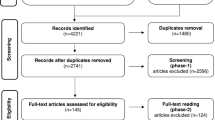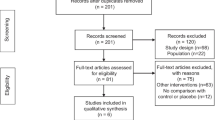Abstract
Objective
To develop a psychometrically appropriate brief symptoms measure of carpal tunnel syndrome (CTS).
Methods
Preoperative CTS 11-item symptom severity and 8-item functional status scales from 693 patients (71% women) with CTS were subjected to exploratory factor analysis and item response theory (IRT) analysis yielding a revised CTS symptoms scale. A validation sample of 213 patients (68% women) with CTS completed the 11-item disabilities of the arm, shoulder and hand (QuickDASH), and the revised symptoms scale and 116 patients also completed the original CTS symptom severity scale (median interval 11 days).
Results
Of the 11 CTS symptom severity scale items, 2 items that on factor analysis associated with the functional status items were removed. After IRT recalibrations of the remaining symptom severity scale items, 2 non-fitting items were removed and 2 items were merged creating the 6-item CTS symptoms scale. Factor analysis showed one dominant factor explaining 58% of the variance. Reliability was high (Cronbach alpha = 0.86; IRT person separation reliability = 0.88). No item displayed significant differential item functioning. The 6-item CTS symptoms scale showed strong correlation with the QuickDASH (r = 0.70) and agreement with the original symptom severity scale (ICC = 0.80).
Conclusion
The 6-item CTS symptoms scale has good reliability and validity and can be used to measure symptom severity and treatment outcome in CTS.


Similar content being viewed by others
Abbreviations
- CTS:
-
Carpal tunnel syndrome
- DASH:
-
Disabilities of the arm, shoulder and hand
- EFA:
-
Exploratory factor analysis
- IRT:
-
Item response theory
- PCM:
-
Partial credit model
References
Katz, J. N., Gelberman, R. H., Wright, E. A., Lew, R. A., & Liang, M. H. (1994). Responsiveness of self-reported and objective measures of disease severity in carpal tunnel syndrome. Medical Care, 32, 1127–1133. doi:10.1097/00005650-199411000-00005.
Atroshi, I., Gummesson, C., Johnsson, R., & Sprinchorn, A. (1999). Symptoms, disability, and quality of life in patients with carpal tunnel syndrome. The Journal of Hand Surgery, 24, 398–404. doi:10.1053/jhsu.1999.0398.
Agabegi, S. S., Freiberg, R. A., Plunkett, J. M., & Stern, P. J. (2007). Thumb abduction strength measurement in carpal tunnel syndrome. The Journal of Hand Surgery, 32, 859–866. doi:10.1016/j.jhsa.2007.04.007.
Mallette, P., Zhao, M., Zurakowski, D., & Ring, D. (2007). Muscle atrophy at diagnosis of carpal and cubital tunnel syndrome. The Journal of Hand Surgery, 32, 855–858. doi:10.1016/j.jhsa.2007.03.009.
Levine, D. W., Simmons, B. P., Koris, M. J., Daltroy, L. H., Hohl, G. G., Fossel, A. H., et al. (1993). A self-administered questionnaire for the assessment of severity of symptoms and functional status in carpal tunnel syndrome. The Journal of Bone and Joint Surgery. American Volume, 75, 1585–1592.
Atroshi, I., Johnsson, R., & Sprinchorn, A. (1998). Self-administered outcome instrument in carpal tunnel syndrome: reliability, validity and responsiveness evaluated in 102 patients. Acta Orthopaedica Scandinavica, 69, 82–88.
Mondelli, M., Reale, F., Sicurelli, F., & Padua, L. (2000). Relationship between the self-administered Boston questionnaire and electrophysiological findings in follow-up of surgically-treated carpal tunnel syndrome. Journal of Hand Surgery (Edinburgh, Lothian), 25, 128–134. doi:10.1054/jhsb.2000.0361.
Rosales, R. S., Delgado, E. B., & Diez de la Lastra-Bosch, I. (2002). Evaluation of the Spanish version of the DASH and carpal tunnel syndrome health-related quality-of-life instruments: cross-cultural adaptation process and reliability. The Journal of Hand Surgery, 27, 334–343. doi:10.1053/jhsu.2002.30059.
Leite, J. C., Jerosch-Herold, C., & Song, F. (2006). A systematic review of the psychometric properties of the Boston Carpal Tunnel Questionnaire. BMC Musculoskeletal Disorders, 7, 78. doi:10.1186/1471-2474-7-78.
de Campos, C. C., Manzano, G. M., Leopoldino, J. F., Nobrega, J. A., Sanudo, A., de Araujo, P. C., et al. (2004). The relationship between symptoms and electrophysiological detected compression of the median nerve at the wrist. Acta Neurologica Scandinavica, 110, 398–402. doi:10.1111/j.1600-0404.2004.00332.x.
Imaeda, T., Uchiyama, S., Toh, S., Wada, T., Okinaga, S., Sawaizumi, T., et al. (2007). Validation of the Japanese Society for surgery of the hand version of the carpal tunnel syndrome instrument. Journal of Orthopaedic Science, 12, 14–21. doi:10.1007/s00776-006-1087-9.
Hays, R. D., Morales, L. S., & Reise, S. P. (2000). Item response theory and health outcomes measurement in the 21st century. Medical Care, 38, II28–II42. doi:10.1097/00005650-200009002-00007.
Hambleton, R. K., Swaminathan, H., & Rogers, H. J. (1991). Fundamentals of item response theory. Newbury Park, CA: Sage Publications.
Wilson, M. (2005). Constructing measures: An item response modeling approach. Mahwah, NJ: Lawrence Erlbaum Associates.
Stroud, M. W., McKnight, P. E., & Jensen, M. P. (2004). Assessment of self-reported physical activity in patients with chronic pain: Development of an abbreviated Roland-Morris disability scale. Journal of Pain, 5, 257–263. doi:10.1016/j.jpain.2004.04.002.
Petersen, M. A., Groenvold, M., Aaronson, N., Blazeby, J., Brandberg, Y., de Graeff, A., et al. (2006). Item response theory was used to shorten EORTC QLQ-C30 scales for use in palliative care. Journal of Clinical Epidemiology, 59, 36–44. doi:10.1016/j.jclinepi.2005.04.010.
Edelen, M. O., & Reeve, B. B. (2007). Applying item response theory (IRT) modeling to questionnaire development, evaluation, and refinement. Quality of Life Research, 16(Suppl 1), 5–18. doi:10.1007/s11136-007-9198-0.
Beaton, D. E., Wright, J. G., & Katz, J. N. (2005). Development of the QuickDASH: Comparison of three item-reduction approaches. The Journal of Bone and Joint Surgery. American Volume, 87, 1038–1046. doi:10.2106/JBJS.D.02060.
Gummesson, C., Ward, M. M., & Atroshi, I. (2006). The shortened disabilities of the arm, shoulder and hand questionnaire (QuickDASH): Validity and reliability based on responses within the full-length DASH. BMC Musculoskeletal Disorders, 7, 44. doi:10.1186/1471-2474-7-44.
Little, R. J. A. (1988). A test of missing completely at random for multivariate data with missing values. Journal of the American Statistical Association, 83, 1198–1202. doi:10.2307/2290157.
Lorenzo-Seva, U., & Ferrando, P. J. (2006). FACTOR: A computer program to fit the exploratory factor analysis model. Behavior Research Methods, 38, 88–91.
Finney, S. J., & DiStefano, C. (2006). Non-normal and categorical data in structural equation modeling. In G. R. Hancock & R. O. Mueller (Eds.), Structural equation modeling: A second course (pp. 269–314). Greenwich, CT: Information Age Publishing.
Panter, A. T., Swygert, K. A., Grant, D. W., & Tanaka, J. S. (1997). Factor analytic approaches to personality item-level data. Journal of Personality Assessment, 68, 561–589. doi:10.1207/s15327752jpa6803_6.
Muthén, B., & Kaplan, D. (1985). A comparison of some methodologies for the factor analysis of non-normal Likert variables. The British Journal of Mathematical and Statistical Psychology, 38, 171–189.
Benson, J., & Fleishman, J. A. (1994). The robustness of maximum likelihood and distribution-free estimators to non-normality in confirmatory factor analysis. Quality & Quantity, 28, 117–136. doi:10.1007/BF01102757.
Olsson, U. H., Foss, T., Troye, S. V., & Howell, R. D. (2000). The performance of ML, GLS, and WLS estimation in structural equation modeling under conditions of misspecification and nonnormality. Structural Equation Modeling: A Multidisciplinary Journal, 7, 557–595.
Thompson, B. (2004). Exploratory and confirmatory factor analysis: Understanding concepts and applications. Washington, DC: American Psychological Association.
Hambleton, R. K. (2005). Applications of item response theory to improve health outcomes assessment: Developing item banks, linking instruments, and computer-adaptive testing. In J. Lipscomb, C. C. Gotay, & C. Snyder (Eds.), Outcomes assessment in cancer (pp. 445–464). Cambridge: Cambridge University Press.
Rasch, G. (1960). Probabilistic models for some intelligence and attainment tests. Copenhagen: Danish Institute for Educational Research. (Reprinted by University of Chicago Press, 1980).
Masters, G. N. (1982). A Rasch model for partial credit scoring. Psychometrika, 47, 149–174. doi:10.1007/BF02296272.
Wu, M. L., Adams, R. J., & Wilson, M. (2007). ConQuest: Generalized Item Response Modeling Software. Hawthorn, Australia: Australian Council for Educational Research (ACER).
Wright, B. D., & Masters, G. N. (1982). Rating scale analysis. Chicago: MESA Press.
Cole, J. C., Rabin, A. S., Smith, T. L., & Kaufman, A. S. (2004). Development and validation of a Rasch-derived CES-D short form. Psychological Assessment, 16, 360–372. doi:10.1037/1040-3590.16.4.360.
Shepard, L. A. (1985). Identifying bias in test items. In B. F. Green (Ed.), New directions in testing and measurement: Issues in testing–Coaching, disclosure, and test bias (pp. 79–104). San Francisco: Jossey-Bass.
Smith, G. T., McCarthy, D. M., & Anderson, K. G. (2000). On the sins of short-form development. Psychological Assessment, 12, 102–111. doi:10.1037/1040-3590.12.1.102.
Spies-Dorgelo, M. N., Terwee, C. B., Stalman, W. A., & van der Windt, D. A. (2006). Reproducibility and responsiveness of the symptom severity scale and the hand and finger function subscale of the Dutch arthritis impact measurement scales (Dutch-AIMS2-HFF) in primary care patients with wrist or hand problems. Health and Quality of Life Outcomes, 4, 87. doi:10.1186/1477-7525-4-87.
Dieleman, J. P., Kerklaan, J., Huygen, F. J., Bouma, P. A., & Sturkenboom, M. C. (2008). Incidence rates and treatment of neuropathic pain conditions in the general population. Pain, 137, 681–688. doi:10.1016/j.pain.2008.03.002.
Atroshi, I., Larsson, G. U., Ornstein, E., Hofer, M., Johnsson, R., & Ranstam, J. (2006). Outcomes of endoscopic surgery compared with open surgery for carpal tunnel syndrome among employed patients: Randomised controlled trial. British Medical Journal, 332, 1473–1476. doi:10.1136/bmj.38863.632789.1F.
Atroshi, I., Breidenbach, W. C., & McCabe, S. J. (1997). Assessment of the carpal tunnel outcome instrument in patients with nerve-compression symptoms. The Journal of Hand Surgery, 22A, 222–227. doi:10.1016/S0363-5023(97)80155-4.
Ware, J. E., Snow, K. K., Kosinski, M., & Gandek, B. (1993). SF-36 health survey manual and interpretation guide. Boston: New England Medical Center.
Katz, J. N., Keller, R. B., Simmons, B. P., Rogers, W. D., Bessette, L., Fossel, A. H., et al. (1998). Maine carpal tunnel study: Outcomes of operative and nonoperative therapy for carpal tunnel syndrome in a community-based cohort. The Journal of Hand Surgery, 23, 697–710. doi:10.1016/S0363-5023(98)80058-0.
Atroshi, I., Gummesson, C., McCabe, S. J., & Ornstein, E. (2007). The SF-6D health utility index in carpal tunnel syndrome. Journal of Hand Surgery (Edinburgh, Lothian), 32, 198–202. doi:10.1016/j.jhsb.2006.11.002.
Acknowledgment
Funding
This research was supported by Skane county council’s research and development foundation, Hässleholm Hospital, and Umeå University, Sweden.
Author information
Authors and Affiliations
Corresponding author
Appendix
Appendix
The 6-item CTS symptoms scale
Rights and permissions
About this article
Cite this article
Atroshi, I., Lyrén, PE. & Gummesson, C. The 6-item CTS symptoms scale: a brief outcomes measure for carpal tunnel syndrome. Qual Life Res 18, 347–358 (2009). https://doi.org/10.1007/s11136-009-9449-3
Received:
Accepted:
Published:
Issue Date:
DOI: https://doi.org/10.1007/s11136-009-9449-3




